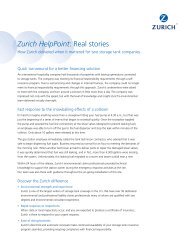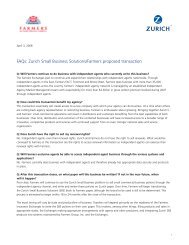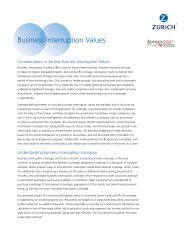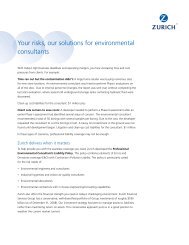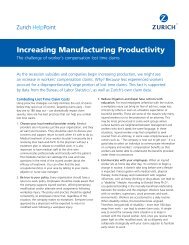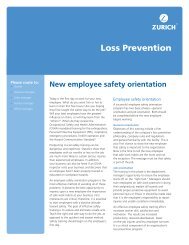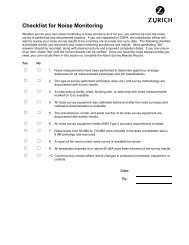Enterprise risk management: A critical tool for strategic ... - Lynch2
Enterprise risk management: A critical tool for strategic ... - Lynch2
Enterprise risk management: A critical tool for strategic ... - Lynch2
You also want an ePaper? Increase the reach of your titles
YUMPU automatically turns print PDFs into web optimized ePapers that Google loves.
Less about Business Continuity, more aboutBusiness ResilienceRisk <strong>management</strong> is often used as a synonym with business continuity <strong>management</strong>.While the two processes share much in common and similar methods, they aredifferent concepts.Business continuity <strong>management</strong> deals with factors that may cause significantbusiness disruption or may damage the organizations’ reputation. It emphasizespreparing the organization <strong>for</strong> and bringing the organization back from athreatening event. In other words, business continuity <strong>management</strong> is an applicationof <strong>risk</strong> <strong>management</strong> in the context of threatening <strong>risk</strong>s and emphasizing a timelyrecovery after an incident.<strong>Enterprise</strong> <strong>risk</strong> <strong>management</strong>, on the other hand, sets down a structured framework<strong>for</strong> the organization to identify, rank, and control all the <strong>risk</strong>s concerned. The purposeof this broader assessment is to create a more resilient business—one that is betterprepared to adapt to changing conditions and leverage emerging opportunities, aswell as anticipate surprises and recover from disruptions. Effective enterprise <strong>risk</strong><strong>management</strong> goes hand in hand with a business resilience process by creating aproactive infrastructure <strong>for</strong> dealing with <strong>risk</strong>s systematically, holistically and successfully.360-Degree ERM Process Supports Strategic ObjectivesEffective <strong>risk</strong> <strong>management</strong> today requires an enterprise approach that views <strong>risk</strong> fromall angles – a <strong>strategic</strong>, 360-degree view supported by tactical, holistic solutions.Achieving this broad view ensures business resilience, reduces total cost of <strong>risk</strong>, andprotects profitability by improving a corporation’s ERM framework. An organizationwith a broader view of <strong>risk</strong> can better uncover and manage its business challenges,including operations and procedures, <strong>management</strong> styles and strategies, industryissues, emerging <strong>risk</strong>s and more.A 360-degree ERM process can help organizations meet these <strong>strategic</strong> objectives:• Protect the capital baseAn ERM review can potentially drive meaningful financial benefits includingreduced cost of servicing debt, improved access to capital and cost of capital.• Enhance value creation and contribute to optimal <strong>risk</strong>-return profileERM can increase probability of the upside and decrease the probability ofa downside.• Support corporate decision-making process <strong>for</strong> senior <strong>management</strong>, ERMcan demonstrate its incorporation of <strong>risk</strong> in<strong>for</strong>mation as a decision-makingprocess, especially <strong>for</strong> rated companies that need to score well on the S&PERM assessment.• Protect reputation and brand by promoting a sound culture of<strong>risk</strong> awarenessERM can increase investor confidence through proven <strong>management</strong>accountability <strong>for</strong> <strong>risk</strong>.3<strong>Enterprise</strong> <strong>risk</strong> <strong>management</strong>: A <strong>critical</strong> <strong>tool</strong> <strong>for</strong> <strong>strategic</strong> decision-making



